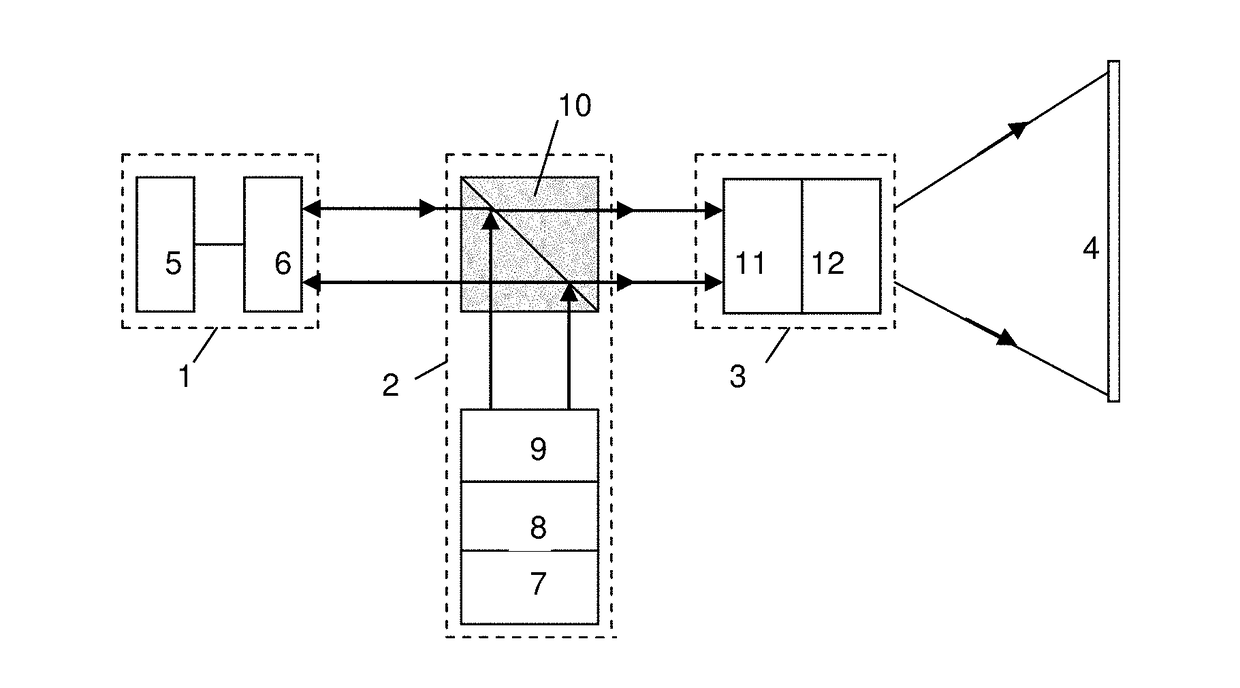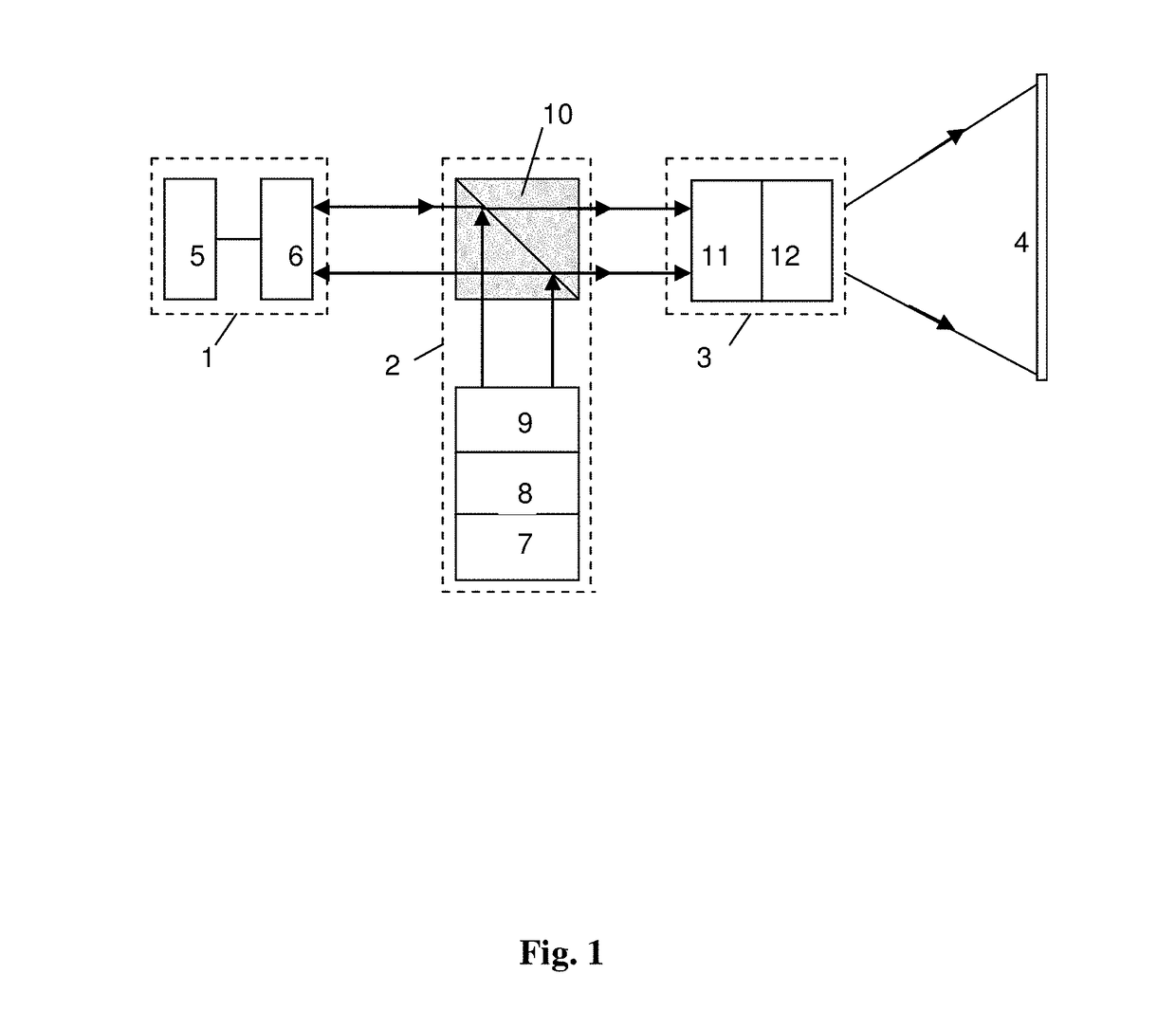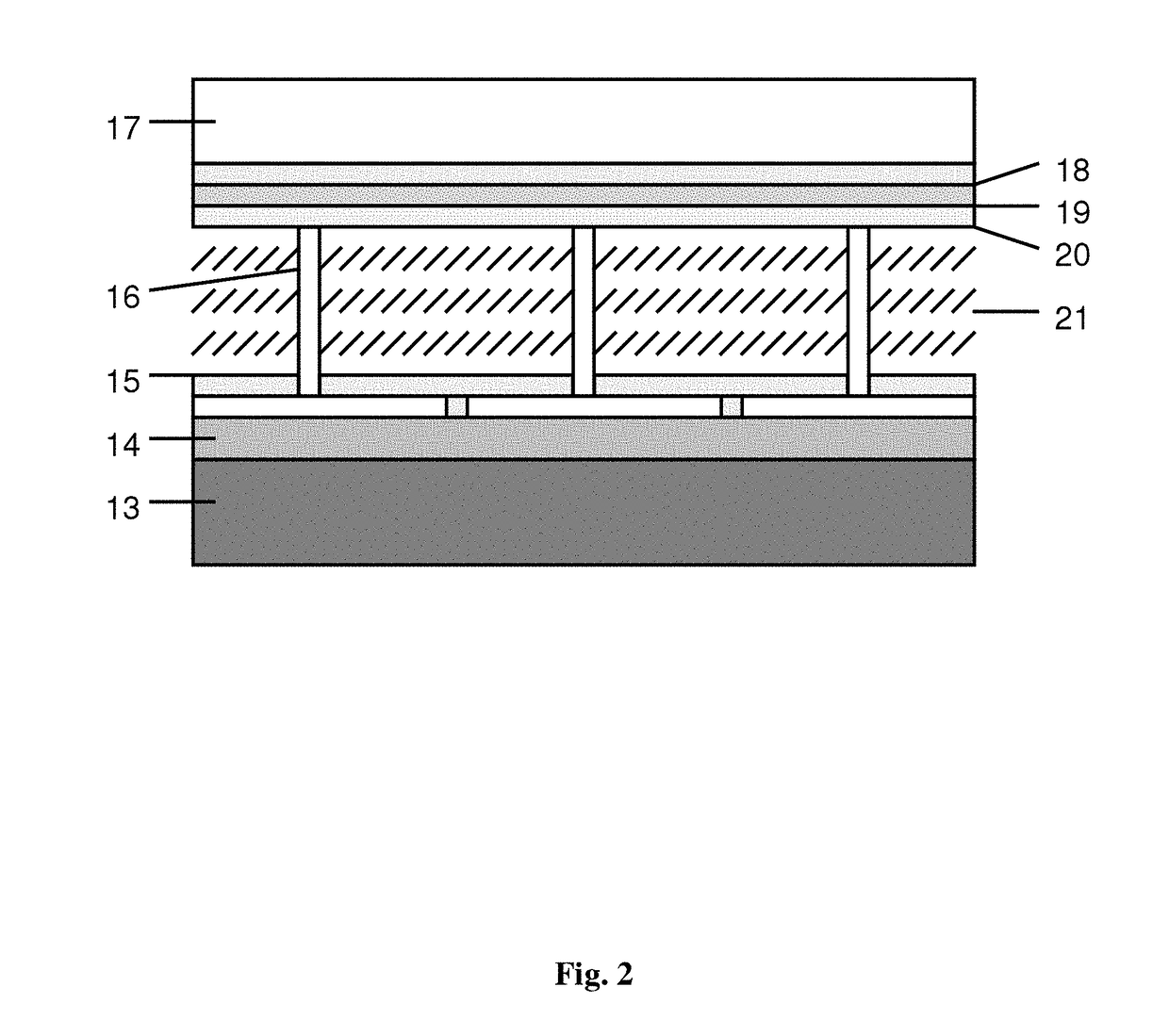Video projector employing ferroelectric liquid crystal display
- Summary
- Abstract
- Description
- Claims
- Application Information
AI Technical Summary
Benefits of technology
Problems solved by technology
Method used
Image
Examples
Embodiment Construction
[0063]To implement the present invention, a few experimental samples of components of a video projector were made, namely, display cells with helix-free FLC for FLCoS-structure and FLC based a despeckler, which was inserted in the channel of data readout with laser diode. The scheme of scanning the readout and deployed images on a projection screen was also simulated, and the characteristics of indicated components and units for readout and scanning were measured.
[0064]For FLCoS-structure FLC with compensated helix was used, where a helix with a pitch of 0.45 micrometers was suppressed due to the interaction of chiral additives with opposite signs of the optical activity. Such FLC possessed the following material parameters: coefficient of rotational viscosity γφ=0.7 Poise, spontaneous polarization PS=40 nC / cm2, and the modulus of elasticity KΨ, determining the deformation along smectic layers, was 1·10−12 Newton. The temperature range of the existence of ferroelectric phase in used...
PUM
| Property | Measurement | Unit |
|---|---|---|
| frequency | aaaaa | aaaaa |
| size | aaaaa | aaaaa |
| voltage | aaaaa | aaaaa |
Abstract
Description
Claims
Application Information
 Login to View More
Login to View More - R&D
- Intellectual Property
- Life Sciences
- Materials
- Tech Scout
- Unparalleled Data Quality
- Higher Quality Content
- 60% Fewer Hallucinations
Browse by: Latest US Patents, China's latest patents, Technical Efficacy Thesaurus, Application Domain, Technology Topic, Popular Technical Reports.
© 2025 PatSnap. All rights reserved.Legal|Privacy policy|Modern Slavery Act Transparency Statement|Sitemap|About US| Contact US: help@patsnap.com



